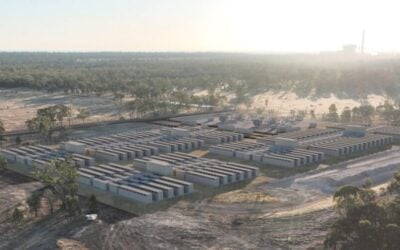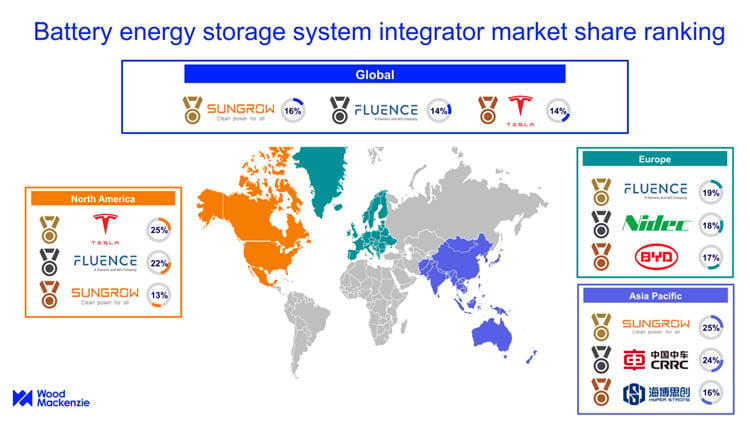Report on Renewable Energy’s Role in U.S. Competitiveness and Sustainable Development
Executive Summary
An analysis of the current energy landscape reveals a critical juncture for the U.S. renewable energy sector. Surging electricity demand, coupled with a shifting political climate, necessitates a strategic reframing of clean energy to align with national priorities of security, economic competitiveness, and energy independence. This report examines these dynamics through the lens of the United Nations Sustainable Development Goals (SDGs), highlighting how renewable energy is integral to achieving SDG 7 (Affordable and Clean Energy), SDG 8 (Decent Work and Economic Growth), SDG 9 (Industry, Innovation, and Infrastructure), and SDG 17 (Partnerships for the Goals).
Challenges in Political Consensus and the Impact on SDG 7
The advancement of renewable energy initiatives faces significant political headwinds. A notable erosion of bipartisan support has occurred, hindering progress toward national energy goals and the targets outlined in SDG 7.
Decline in Bipartisan Support
- In 2020, over 80% of Republican voters supported wind and solar energy development.
- By 2025, this support had decreased to approximately 60%.
- This decline is attributed to the close alignment of renewable energy advocacy with progressive climate politics, which has alienated conservative constituencies.
- Consequently, renewable energy has become a contentious issue, despite its significant presence in conservative-led states; for example, Texas generates nearly 30% of its electricity from wind power.
Market Forces Driving a Paradigm Shift in Energy Infrastructure
Economic and technological trends are creating an urgent need for the rapid expansion of energy capacity. These market-driven forces present a compelling case for renewable energy, independent of political discourse, and are crucial for the advancement of SDG 9.
Surging Demand and Infrastructure Requirements
- Increased Electricity Demand: The proliferation of artificial intelligence, data centers, and general electrification is causing a dramatic rise in electricity consumption.
- Limitations of Traditional Sources: Conventional power sources, such as new nuclear or coal plants, require long development timelines, while natural gas capacity cannot be scaled quickly enough to meet near-term demand.
- The Renewable Advantage: Wind, solar, and battery storage projects can be deployed in a fraction of the time, offering a scalable solution to prevent energy shortages and price hikes. This rapid deployment directly supports the development of resilient infrastructure as per SDG 9.
- Economic Imperative: Failure to add sufficient low-cost generation capacity could lead to significant increases in electricity prices by 2030, impacting economic stability and access to affordable energy (SDG 7).
A Strategic Framework for Aligning Renewables with National Priorities and SDGs
To rebuild broad-based support, the renewable energy sector can reframe its value proposition around core principles of freedom, security, and free enterprise. This approach aligns clean energy with national interests while simultaneously advancing key Sustainable Development Goals.
Core Pillars for Reframing
- Freedom and Energy Autonomy: Promoting renewable energy empowers individuals and communities to generate their own power, enhancing personal liberty and contributing to more resilient and sustainable communities (SDG 11).
- Security and Resilience: Domestic renewable sources like solar and wind strengthen national energy independence. Once installed, this infrastructure is insulated from geopolitical supply disruptions, ensuring a secure and stable energy supply, a cornerstone of resilient infrastructure under SDG 9.
- Free Enterprise and Economic Growth: Renewable energy technologies are increasingly cost-competitive with fossil fuels. Fostering market-based competition allows the most efficient and affordable sources to prevail, driving innovation and economic growth in line with the principles of SDG 8.
The Path Forward: A Critical Window for Sustainable Growth
The period leading up to 2027 represents a pivotal moment for the U.S. energy sector. The expiration of federal clean energy tax credits creates both a challenge and an opportunity for the industry to solidify its market position and contribute to long-term sustainability goals.
Strategic Priorities for 2025-2027
- Accelerated Deployment: The two-year window before tax credits expire provides an incentive to maximize the construction of new renewable capacity, directly advancing the clean energy targets of SDG 7.
- Transition to Market Competitiveness: The eventual phasing out of subsidies will compel the industry to focus on cost reduction and technological innovation, proving its viability on market merit alone. This fosters a sustainable economic model that supports SDG 8.
- Addressing Energy Affordability: With national electricity prices having risen 13% since 2022, the deployment of low-marginal-cost renewables is essential to mitigate further rate hikes and ensure energy remains affordable for all citizens.
Conclusion: Fostering Partnerships for a Secure and Sustainable Energy Future
The future of American prosperity and security is intrinsically linked to the availability of abundant, affordable, and reliable energy. The current “energy culture war” is counterproductive to achieving this objective. By framing renewable energy as a contributor to national security, economic strength, and energy independence, it is possible to build a broader coalition of support. Overcoming partisan divisions to embrace an all-of-the-above energy strategy is a clear application of SDG 17 (Partnerships for the Goals), ensuring that the United States can effectively meet its domestic needs while contributing to global sustainability targets.
Analysis of Sustainable Development Goals in the Article
1. Which SDGs are addressed or connected to the issues highlighted in the article?
The article discusses issues related to energy policy, economic competitiveness, and infrastructure development, which connect to several Sustainable Development Goals (SDGs). The following SDGs are addressed:
- SDG 7: Affordable and Clean Energy – The core theme of the article is the promotion of renewable energy (solar, wind) as a source of affordable, reliable, and homegrown power.
- SDG 8: Decent Work and Economic Growth – The article links the renewable energy industry to U.S. competitiveness, free enterprise, and innovation, highlighting its role in economic growth.
- SDG 9: Industry, Innovation, and Infrastructure – The text emphasizes the need to build new energy infrastructure (wind, solar, battery installations) rapidly and for the industry to innovate to reduce costs.
- SDG 13: Climate Action – Although the author advises against framing renewable energy solely as a climate issue, the promotion of wind and solar power is an inherent climate action measure aimed at reducing reliance on fossil fuels.
- SDG 17: Partnerships for the Goals – The article explicitly addresses the political polarization surrounding energy policy (“energy culture war”) and calls for a non-partisan, market-based approach, which relates to building effective partnerships and policy coherence for sustainable development.
2. What specific targets under those SDGs can be identified based on the article’s content?
Based on the article’s discussion, several specific SDG targets can be identified:
- Target 7.1: Ensure universal access to affordable, reliable and modern energy services.
- The article highlights the threat to affordability, noting that “electricity prices have jumped 13% nationwide since 2022” and warns that failing to add cheap capacity could send prices “soaring by 2030.” It presents renewables as “essential for keeping… energy bills low.”
- Target 7.2: Increase substantially the share of renewable energy in the global energy mix.
- The entire article advocates for increasing the share of renewables. It mentions a “blitz of development” for clean energy and provides a specific example: “Texas alone gets nearly 30% of its electricity from wind.”
- Target 9.1: Develop quality, reliable, sustainable and resilient infrastructure.
- The article discusses the need to build “wind, solar, and battery installations” to meet surging electricity demand. It also frames domestic renewable energy as resilient infrastructure, calling it a “fortress against foreign threats” because “no adversary can shut off the supply of sun or wind.”
- Target 13.2: Integrate climate change measures into national policies, strategies and planning.
- The article discusses national policies like the “federal clean energy tax credits expiring in 2027” which are designed to incentivize the growth of renewables, a key climate change mitigation strategy.
- Target 17.14: Enhance policy coherence for sustainable development.
- The article directly addresses the lack of policy coherence caused by political division, describing how an industry “once embraced by all” became a “partisan battlefield.” The author’s call to “end the energy culture war” is a plea for greater policy coherence.
3. Are there any indicators mentioned or implied in the article that can be used to measure progress towards the identified targets?
Yes, the article mentions and implies several indicators that can be used to measure progress:
- For Target 7.1 (Affordable Energy):
- Indicator: Change in electricity prices. The article provides a specific data point: “Electricity prices have jumped 13% nationwide since 2022.” This can be tracked over time to measure affordability.
- For Target 7.2 (Renewable Energy Share):
- Indicator: Percentage of electricity generated from renewable sources. The article states that “Texas alone gets nearly 30% of its electricity from wind,” serving as a direct example of this indicator. The overall amount of new capacity built is an implied measure.
- For Target 9.1 (Infrastructure Development):
- Indicator: Amount of new renewable energy capacity installed (in megawatts or gigawatts). The article refers to a “blitz of development” and a “sprint” to “build as much capacity as possible,” implying that the quantity of new installations is a key metric of progress.
- For Target 17.14 (Policy Coherence):
- Indicator: Level of bipartisan political support for renewable energy. The article provides a quantitative measure of the decline in political consensus: “Over 80% of my fellow Republicans supported wind and solar energy in 2020, but by 2025 that share has fallen to around 60%.”
4. Summary Table of SDGs, Targets, and Indicators
| SDGs | Targets | Indicators |
|---|---|---|
| SDG 7: Affordable and Clean Energy | 7.1: Ensure access to affordable energy. 7.2: Increase the share of renewable energy. |
– Percentage change in electricity prices (mentioned as a 13% jump since 2022). – Share of electricity from renewables (mentioned as nearly 30% from wind in Texas). |
| SDG 8: Decent Work and Economic Growth | 8.2: Achieve higher levels of economic productivity through innovation. | – Implied: Cost reduction and innovation metrics for the renewable energy industry to “compete on merit.” |
| SDG 9: Industry, Innovation, and Infrastructure | 9.1: Develop quality, reliable, sustainable and resilient infrastructure. | – Amount of new renewable energy capacity (wind, solar, battery) installed. |
| SDG 13: Climate Action | 13.2: Integrate climate change measures into national policies. | – Existence and impact of national policies like federal clean energy tax credits. |
| SDG 17: Partnerships for the Goals | 17.14: Enhance policy coherence for sustainable development. | – Level of political support for renewables across parties (mentioned as falling from 80% to 60% among Republicans). |
Source: fortune.com







